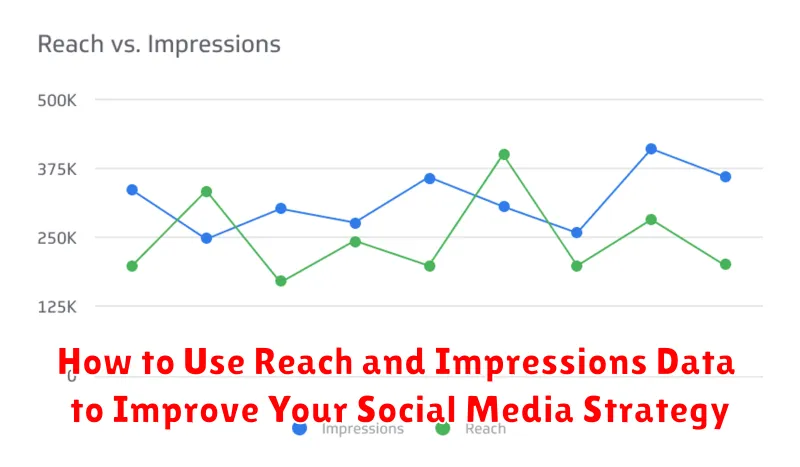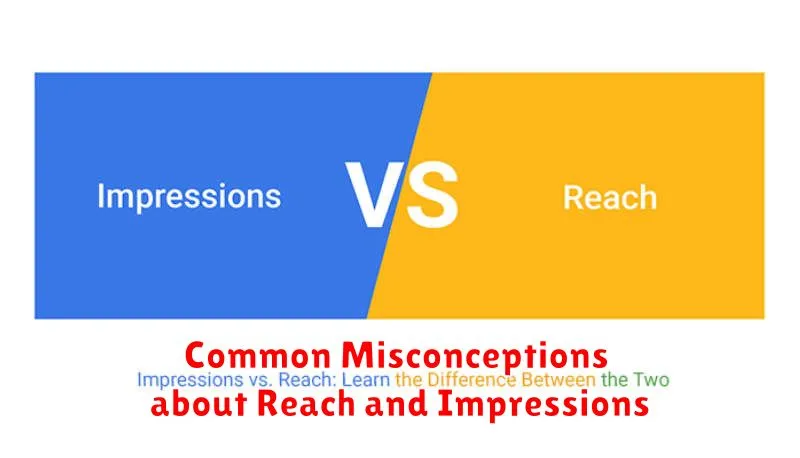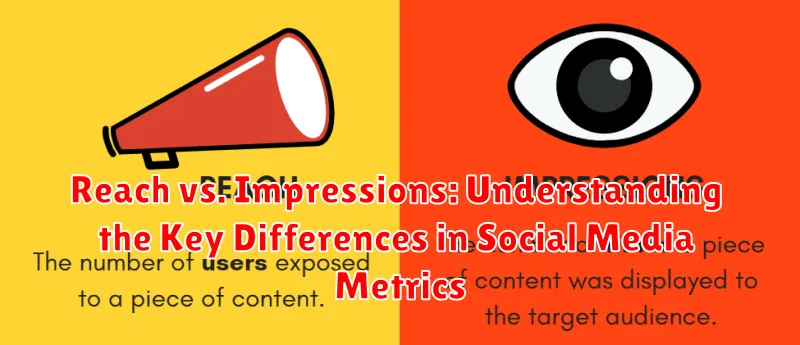In the dynamic landscape of social media marketing, understanding the nuances of various metrics is crucial for effective campaign measurement and optimization. Two frequently encountered metrics, reach and impressions, are often confused, yet they hold distinct meanings and provide different insights into your social media performance. This article aims to clarify the key differences between reach and impressions, empowering you to leverage these metrics effectively for enhanced social media strategies.
Grasping the difference between reach and impressions is paramount for accurately assessing the impact of your social media content. While both metrics provide valuable data regarding content visibility, reach refers to the number of unique users who have seen your content, whereas impressions represent the total number of times your content was displayed, regardless of unique viewership. Accurately interpreting reach and impressions will enable you to refine your content strategy, target specific audiences, and ultimately achieve your social media marketing objectives.
Defining Reach and Its Importance in Social Media Marketing
In social media marketing, reach refers to the number of unique users who have seen your content. This metric counts each user only once, regardless of how many times they’ve encountered your post. Therefore, if one person views your post three times, it’s counted as one reach, not three.
Reach is a crucial metric because it indicates the potential audience size for your message. A higher reach suggests your content is being distributed widely and has the potential to engage a larger portion of your target audience. This contributes to increased brand awareness and visibility.
Understanding your reach can help you assess the effectiveness of your content distribution strategies. A low reach might signal a need to adjust your posting schedule, target different demographics, or experiment with various content formats.
Tracking reach allows you to monitor brand growth over time and provides insights into how effectively your campaigns are expanding your audience base.
Understanding Impressions and Their Role in Measuring Visibility
Impressions represent the number of times your content is displayed, regardless of whether it was clicked or not. Essentially, every time your post shows up on someone’s screen, it counts as an impression. This metric provides insights into the potential visibility of your content.
A single user can generate multiple impressions. For example, if a user scrolls past your post twice in their feed, that counts as two impressions. Therefore, impressions offer a measure of how frequently your content is served, offering a valuable gauge of your overall reach within the platform’s algorithm.
Tracking impressions is crucial for understanding how often your content is appearing within users’ feeds. High impression numbers can signify successful content distribution, even if your reach isn’t as broad. Analyzing impressions alongside reach can help you pinpoint areas for improvement in your content strategy. For example, low reach with high impressions might suggest that your content is visible, but not engaging enough to prompt further interaction.
Key Differences Between Reach and Impressions
While both metrics offer insights into your content’s performance, reach and impressions represent distinct aspects of visibility. Reach measures the number of unique users who have seen your content. Impressions, on the other hand, measure the total number of times your content has been displayed, regardless of whether it was seen by a unique user.
A single user can generate multiple impressions. For example, if one person sees your post three times, your reach is one, while your impressions are three. This distinction is crucial for understanding the true spread and potential impact of your content.
| Metric | Definition |
|---|---|
| Reach | Number of unique users who saw your content |
| Impressions | Total number of times your content was displayed |
Calculating Reach and Impressions
While social media platforms typically provide these metrics, understanding their underlying calculations can offer deeper insights. Reach is generally calculated as the number of unique users who saw your content. It avoids counting the same user multiple times, even if they viewed your post on several occasions.
Impressions, on the other hand, represent the total number of times your content was displayed, regardless of whether it was seen by a unique user. This means one user can contribute multiple impressions if they view your post more than once. The platform simply counts each instance the content appeared on a screen.
It’s important to note that the specific algorithms used by platforms may vary and are not always publicly disclosed. However, these fundamental principles underpin the calculation of reach and impressions across most social media channels.
How to Use Reach and Impressions Data to Improve Your Social Media Strategy

Leveraging reach and impression data is crucial for optimizing your social media performance. By understanding these metrics, you can refine your content and targeting strategies for better results.
Analyzing reach helps identify the effectiveness of your content in attracting new audiences. Low reach might suggest a need to diversify content formats or revisit posting schedules. High reach, conversely, indicates successful content resonating with a wider audience. Track reach alongside engagement metrics (likes, shares, comments) to gauge true content impact. If reach is high but engagement is low, your content might not be compelling enough to prompt interaction.
Monitoring impressions provides insights into brand visibility. A sudden drop in impressions could signal algorithm changes or issues with content delivery. Consistently high impressions coupled with low reach might suggest a need to expand your audience targeting. Experiment with different targeting options to reach new demographics.
By combining reach and impression data with other key performance indicators (KPIs), you can paint a comprehensive picture of your social media performance and identify areas for improvement. This data-driven approach enables informed decisions about content creation, posting frequency, and audience targeting, ultimately leading to a more effective social media strategy.
Common Misconceptions about Reach and Impressions

Several misconceptions surround reach and impressions, often leading to confusion and misinterpretations of social media performance. Let’s clarify some of these common misunderstandings.
Misconception 1: High Impressions Equal High Reach
A common mistake is assuming that a large number of impressions automatically translates to high reach. This isn’t necessarily true. Impressions count multiple views by the same user, while reach only counts the unique individuals who saw your content. Therefore, you could have high impressions with limited reach if the same few people see your content multiple times.
Misconception 2: Reach is More Important Than Impressions
While reach is a valuable metric, it doesn’t diminish the importance of impressions. Impressions signify the visibility of your content. A high impression count, even with moderate reach, indicates frequent exposure and potential for brand reinforcement among your audience.
Misconception 3: Reach and Impressions Tell the Whole Story
Reach and impressions are valuable metrics, but they are only part of the picture. They shouldn’t be analyzed in isolation. Consider other engagement metrics, such as likes, comments, shares, and click-through rates, to gain a more comprehensive understanding of your content’s performance and audience interaction.

